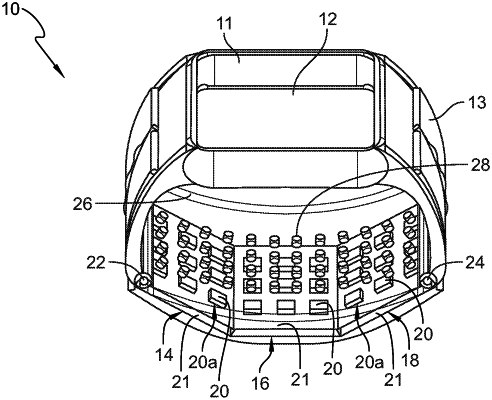| CPC G06F 3/011 (2013.01) [G06F 1/163 (2013.01); G06F 3/017 (2013.01); G04G 21/08 (2013.01)] | 15 Claims |

|
1. A wearable human-machine interface, comprising:
an element to be worn, the element configured to be attached to an area of skin of a limb of a human or animal body,
a flexible layer, with magnetic properties, attached to the element to be worn on a side of the element to be worn that faces the area of skin of the human or animal body so as to come into contact with the surface of the area of skin upon attachment of the element to the area of skin, wherein the flexible layer has a flexibility configured to at least substantially follow deformations of the surface of the area of skin, and wherein the magnetic properties of the flexible layer are configured such that a deformation of the surface of the area of skin leads to a measurable change of the magnetic properties of the flexible layer,
a detection unit which measures changes of the magnetic properties of the flexible layer caused by a corresponding deformation of the surface area of the skin, and
an integrated or separate processing unit configured to perform an algorithm which allocates the measured change of the magnetic properties of the flexible layer to at least one of a configuration, a movement and a movement intensity, with the aid of at least one of Bayes classifiers, an artificial neural network, a support vector machine, a finite state machine, a hidden Markov model, a relevance vector machine, a dynamic time warping method, a conditional random field method, a decision tree, a random forest method, a k-nearest neighbours algorithm, a discriminant analysis, a linear regression, a logistic regression, a Gaussian process, a perceptron and ensemble methods, wherein the ensemble methods include at least one of a Bayes optimal classifier, bagging and boosting, wherein the configuration is a specific position of the limb of the human or animal and the movement is a temporal change of the configuration, the integrated or separate processing unit further configured to assign a control command to the allocated at least one of the configuration, the movement and the movement intensity, and to transmit the control command to a device to cause the device to perform an action corresponding to the control command.
|